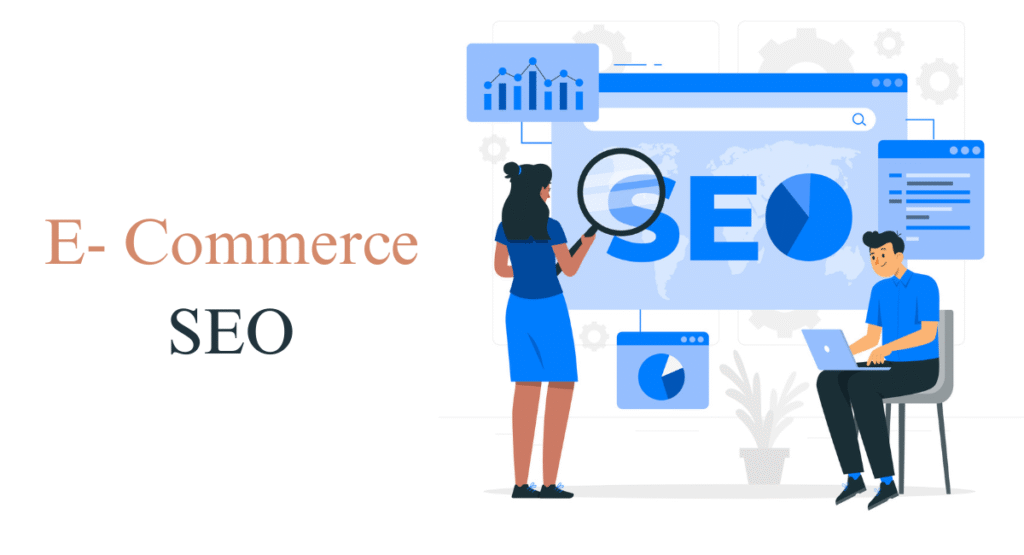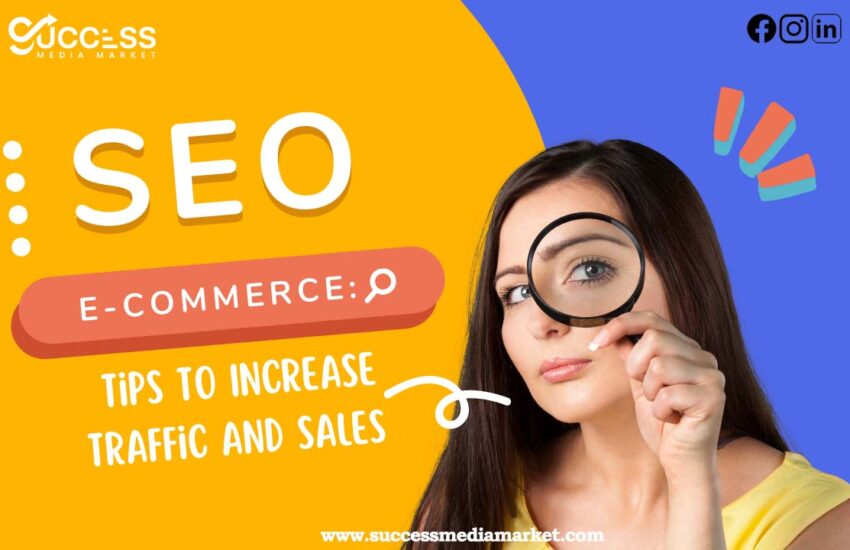SEO For E-Commerce: Tips To Increase Traffic And Sales
Introduction: Why SEO Is Important For The Success Of E-Commerce
In today’s competitive digital scenario, a beautifully designed online store is not enough. If customers cannot find your products through the search engine, your sales will be damaged. SEO becomes a game-changer for e-commerce. Adaptation of your product pages, category details and site structure can dramatically increase visibility and drive conversions.
💡 Ready to elevate your e-commerce game?
Explore our SEO services
Understand The Basics Of E-Commerce SEO
What Is E-Commerce SEO?
E-commerce SEO is the practice of creating your online store more visible in the search engine result pages (SERP). Unlike the general website SEO, it requires adapting hundreds of or thousands of product pages, improving crewness and ensuring rapid loading mobile experience.
Why It Matters
- Increased visibility for products
- Lower customer acquisition costs
- Better user experience
- Higher conversion rates
According to Statista, global e-commerce sales exceeded $ 6 trillion in 2024, and this number is increasing. The competition is fierce – but the opportunity is on a large scale.
On-Page SEO For E-Commerce: Best Practice
Adapt The Product Pages With Strategic Keywords
Each product page should target a specific keyword. Conduct keyword research using tools such as Ahrefs, SEMrush, or Google Keyword Planner.Look for:
- Long-tail keywords with buyer intent
- Terms with high search volume but low competition
- LSI (Latent Semantic Indexing) keywords
✅ Example: Instead of “shoes,” use “women’s waterproof hiking shoes size 7”
Internal Link: Read our guide on How to Build a Winning Digital Marketing Strategy
Craft Unique Titles & Meta Descriptions
Duplicate material is #1 SEO killer in e-commerce. Ensure that each product and category page is:
- A unique, keyword-rich title (70 letters maximum)
- A compelling meta details (156 characters maximum)
Use SEO-Friendly URLs
The structure URL which is clean, readable, and your main keywords include:
✅ Good: www.store.com/mens-running-shoes
❌ Bad: www.store.com/product?id=54321
Technical SEO For E-Commerce Websites
Improve Site Speed
Slow websites back down buyers. Use Google PageSpeed Insights such as tools to audit your site. Improve the performance by:
- Compressing images
- Minimizing JavaScript/CSS
- Using a reliable hosting service
Make Your Site Mobile-Responsive
Over 60% of online shoppers use mobile devices. Google uses mobile-first indexing, so your mobile site must be flawless.
Use Schema Markup for Rich Snippets
Add Product Schema to display reviews, prices, and availability directly in search results. This increases CTR and trust.
Content Marketing for E-commerce SEO
Launch a Blog to Drive Organic Traffic
Content marketing helps you rank for informational queries and build authority. Example topics include:
- “How to Choose the Best Winter Boots for Hiking”
- “Top 5 Must-Have Gadgets for Remote Work in 2025”
Internal Link: Digital Marketing Trends You Must Follow in 2025
Use Video Content to Enhance SEO
Google loves video. Embed product videos, how-to guides, or customer testimonials on your product pages and YouTube channel.
Build a Keyword-Rich FAQ Section
FAQs improve user experience, reduce bounce rates, and help pages rank for voice and conversational queries.

Off-Page SEO for E-commerce Stores
Build Backlinks from Reputable Sources
Reach out to bloggers, influencers, or digital publications for:
- Guest posts
- Product reviews
- Affiliate partnerships
Outbound Link: Neil Patel’s guide to link building
Leverage Social Proof & UGC
Encourage reviews, testimonials, and user-generated content (UGC) on platforms like Instagram and Pinterest. These can boost your visibility and create more link opportunities.
SEO Pitfalls E-commerce Sites Should Avoid
- Duplicate product descriptions from manufacturers
- Ignoring image ALT tags
- Using thin content or missing metadata
- Not implementing 301 redirects for discontinued products
- Having a cluttered or hard-to-navigate site structure
Tools to Power Up Your E-commerce SEO
- Yoast SEO for WordPress – for meta tags and readability
- Screaming Frog SEO Spider – to audit your entire site
- Surfer SEO – for optimizing content structure
- Ubersuggest – for keyword research
- Hotjar – for user behavior analysis
👉 Start Your E-commerce SEO Journey Now
Conclusions: SEO Is The Key To E-Commerce Development
With thousands of products competing for a single keyword, it is not enough to be a good looking store-you need a rank. Applying the correct SEO strategy stitched for your e-commerce platform is a cost-effective and powerful way to continuously run traffic, increase brand visibility and eventually, increase its sales.
🌟 Need help implementing these strategies?
Contact Success Media Market for expert e-commerce SEO support!
FAQs About E-commerce SEO
What is the most important SEO element for an online store?
The product page is the origin of any e-commerce SEO strategy. It should contain unique materials, pictures and metadata.
How long does SEO result take to see?
Most e-commerce sites begin to see the average result in 3 to 6 months depending on competition and strategy.
Is SEO better than advertisements paid for e-commerce?
SEO provides long-term, permanent traffic per click-Unlike the advertisements made, which prevents the moment when your budget goes out.
Can I do e-commerce SEO myself?
Yes, but hiring experts such as Success Media Market ensure more effective results, rapidly.
SEO – Shopify, WooCommerce, or which platforms are the best for Magento?
All can work well with proper adaptation. Shopify is user-friendly, WooCommerce is flexible, and Magento is powerful for enterprise solutions.

